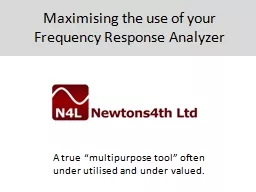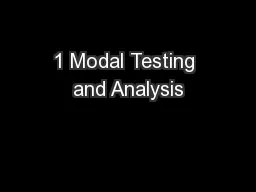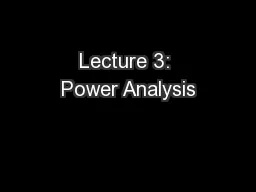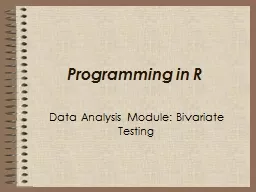PPT-Power Analysis Theory and testing to IEC62301/EN50564
Author : pasty-toler | Published Date : 2018-03-06
N4L PPA Series Basics of Power measurement Basic electronics courses teach us that power measurement in its simplest form is the process of multiplying voltage
Presentation Embed Code
Download Presentation
Download Presentation The PPT/PDF document "Power Analysis Theory and testing to IEC..." is the property of its rightful owner. Permission is granted to download and print the materials on this website for personal, non-commercial use only, and to display it on your personal computer provided you do not modify the materials and that you retain all copyright notices contained in the materials. By downloading content from our website, you accept the terms of this agreement.
Power Analysis Theory and testing to IEC62301/EN50564: Transcript
Download Rules Of Document
"Power Analysis Theory and testing to IEC62301/EN50564"The content belongs to its owner. You may download and print it for personal use, without modification, and keep all copyright notices. By downloading, you agree to these terms.
Related Documents














![[FREE]-Unit Testing Principles, Practices, and Patterns: Effective testing styles, patterns,](https://thumbs.docslides.com/980180/free-unit-testing-principles-practices-and-patterns-effective-testing-styles-patterns-and-reliable-automation-for-unit-testing-mocking-and-integration-testing-with-examples-in-c.jpg)